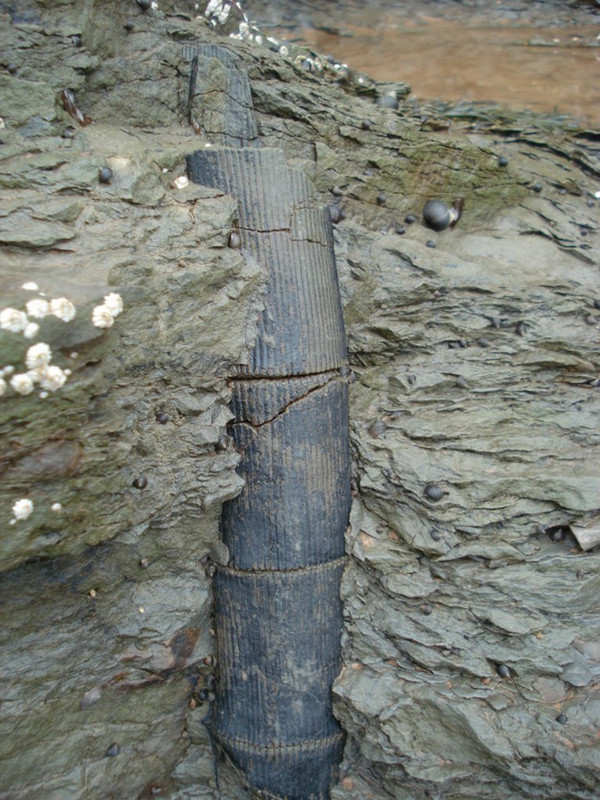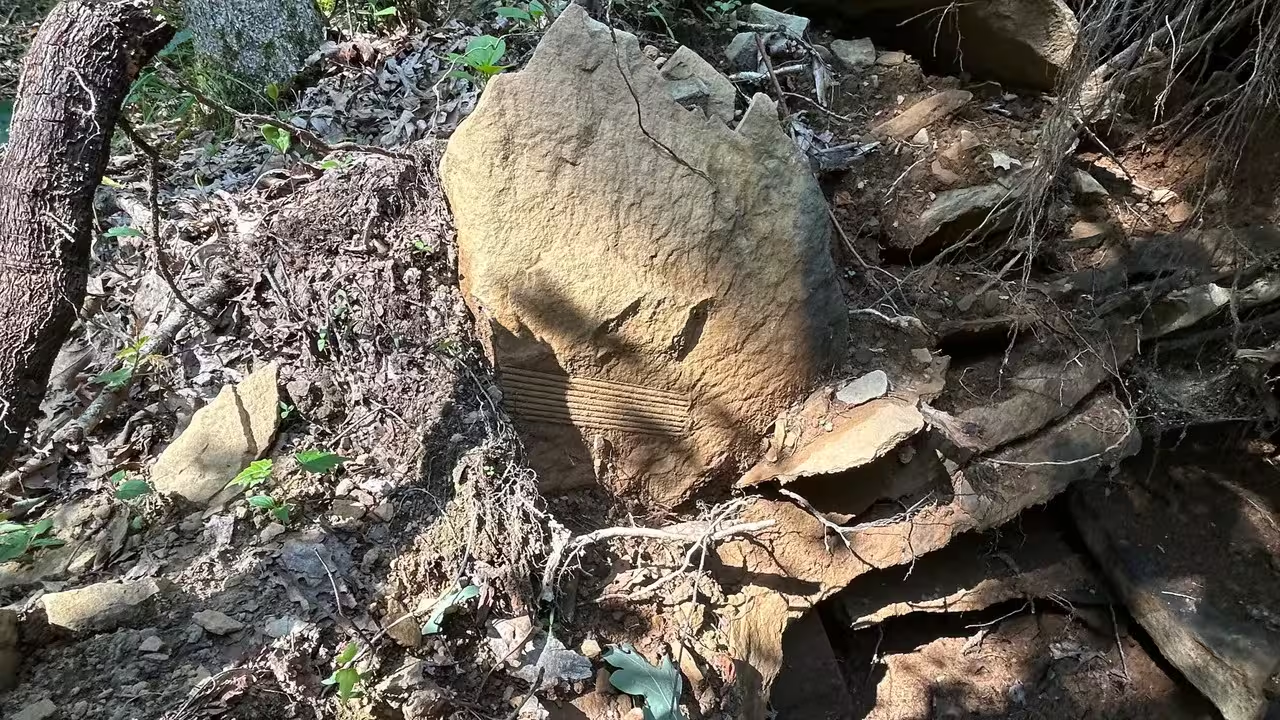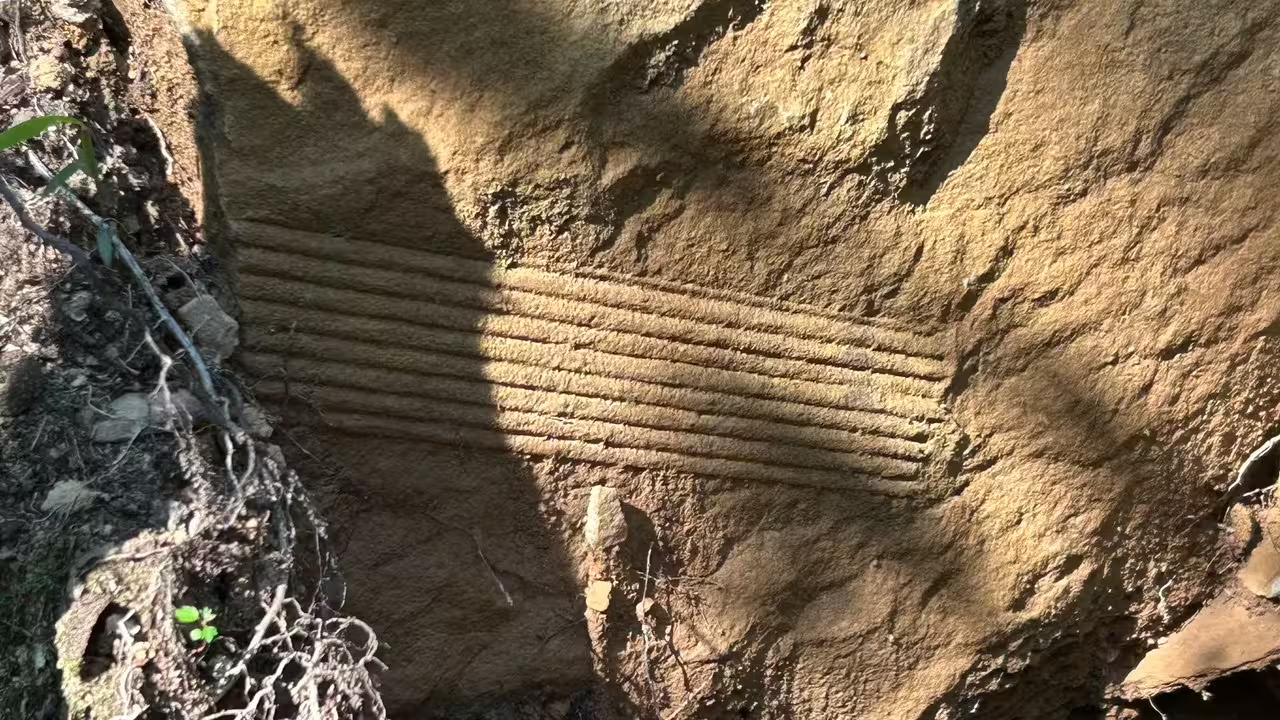Go  | New  | Find  | Notify  | Tools  | Reply  |  |
| Member |
| ||
|
Truth Seeker |
I am not a rock or fossil expert, but I wonder about the rock itself. It looks thin, brittle, and sandy. If that is the case, it is possible the rock was on top of something and over time water flow etched a copy of what the rock was on. Maybe some type of wood that then rotted away and now the rock has the marks of it. What it was on, who knows? The pattern is too straight and uniform to be much else. NRA Benefactor Life Member | |||
|
| Member |
Nature rarely does straight lines. ____________ Pace | |||
|
| Wait, what? |
Looks like a tree imprint fossil. Here’s a petrified tree fossil, possibly Sigillaria, with similar lines. It definitely appears to be some kind of plant fossil.  “Remember to get vaccinated or a vaccinated person might get sick from a virus they got vaccinated against because you’re not vaccinated.” - author unknown | |||
|
| Savor the limelight |
A piece of an old fashioned washboard? | |||
|
| Member |
They all seem like good guesses to me. What's interesting to me is how abruptly it ends on the right end and the sides. When I can get the blow downed trees cleared off that trail to be able to get the SXS to it I'll bring it back to the house. No car is as much fun to drive, as any motorcycle is to ride. | |||
|
| Partial dichotomy |
| |||
|
Member |
tube shaped marine creatures like long straight sticks found in a rock like a fossil The "tube-shaped marine creatures like long straight sticks found in a rock like a fossil" you are describing could be several different types of ancient marine organisms, most notably: Belemnites: These are extinct cephalopods, distant relatives of modern squid and cuttlefish. Appearance: The most commonly fossilized part is the internal, hard, bullet-shaped or cigar-shaped internal shell called a rostrum or guard, which can resemble a thick, pointed stick or dart. Time Period: They lived during the Jurassic and Cretaceous periods, dying out around the same time as the dinosaurs. Orthoceras: These are extinct "straight-shelled" nautiloid cephalopods, ancestors of the modern chambered nautilus. Appearance: They had long, conical shells with internal chambers separated by walls (septa) and a central tube (siphuncle), which are often visible as lines and a central line in the fossil. Time Period: They were abundant during the Paleozoic Era, especially the Ordovician and Devonian Periods. Crinoid Stems: These are the fossilized remains of the stalks of crinoids, marine animals sometimes called "sea lilies" due to their plant-like appearance, though they are animals related to starfish and sea urchins. Appearance: Their stems are made up of stacked, interlocking disks or "columnals," often appearing as segmented, bead-like, or coin-like structures, sometimes found in long, straight sections resembling sticks. Time Period: Crinoids have a long fossil record, dating back as far as the Paleozoic Era and are still found in modern oceans. Fossilized Tube Worms: Some marine worms, like certain polychaetes, secrete calcium carbonate to build protective tubes to live in, and these tubes can be preserved as fossils. Google AI provided the above response to my poorly written query... ------- Trying to simplify my life... | |||
|
| Member |
Maybe is a marine fossil of some kind. It also reminds me of mud daubers only the tubes in this rock are a little smaller. No car is as much fun to drive, as any motorcycle is to ride. | |||
|
| Powered by Social Strata |
| Please Wait. Your request is being processed... |
|
© SIGforum 2025


